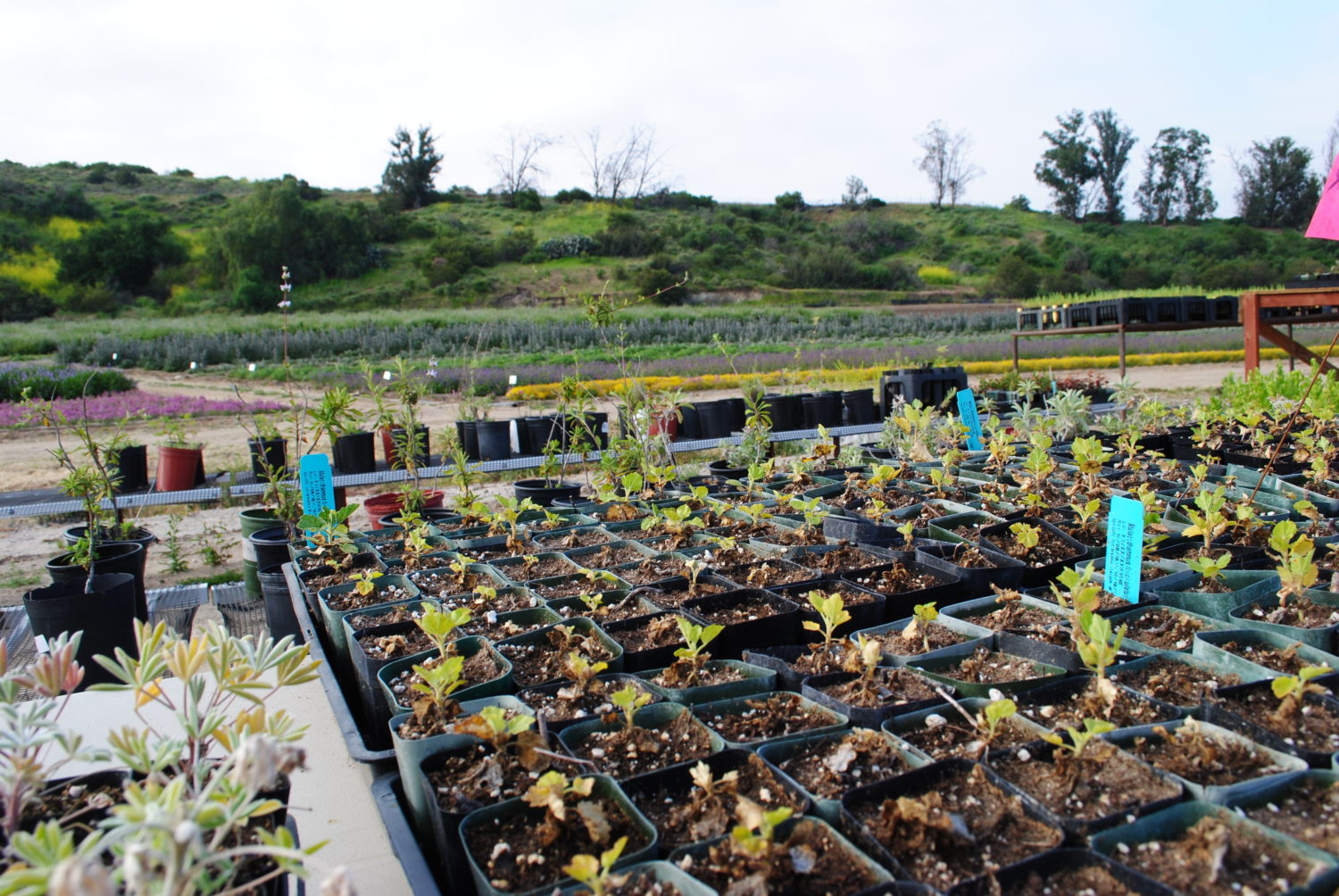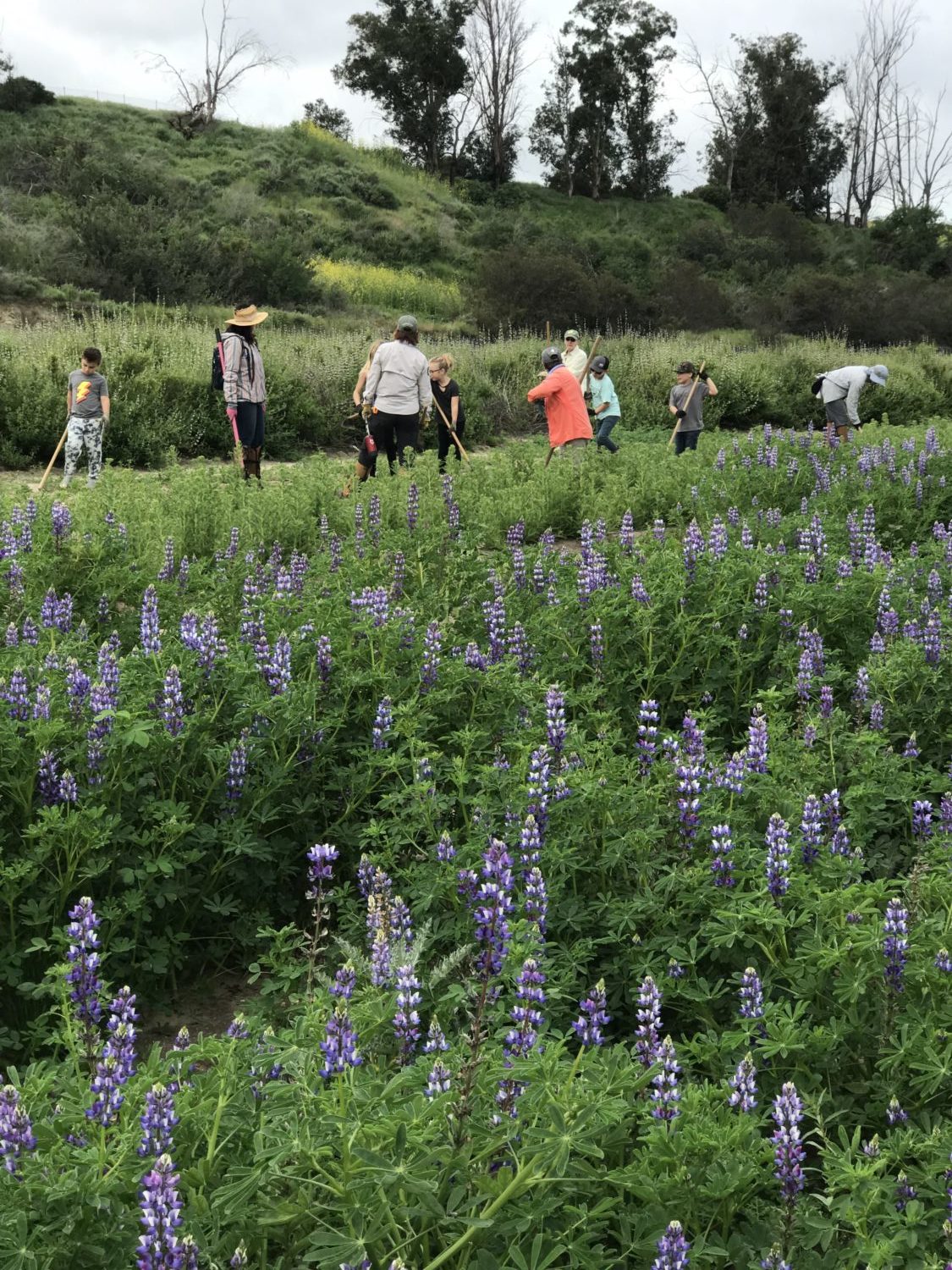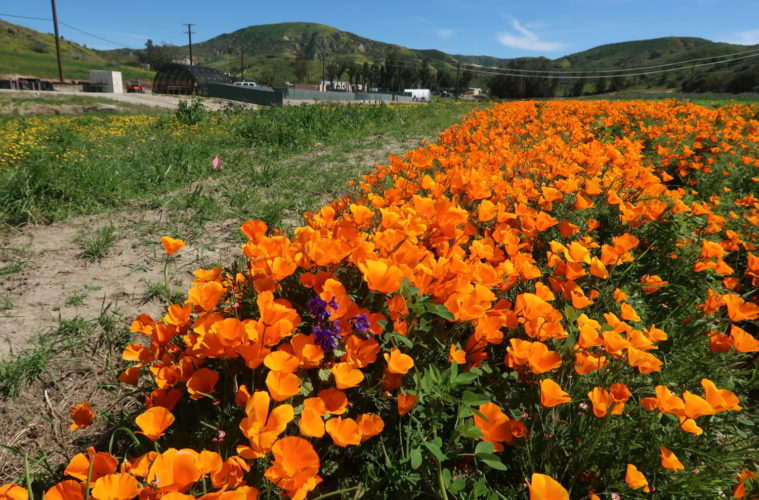Nestled in the hills of Irvine, the Irvine Ranch Conservancy’s Native Seed Farm is celebrating 10 years of growth and harvest.
Born out of the destruction of the Santiago Fire, the farm was cultivated on a parcel of a burned-out avocado orchard. From it’s beginning in 2009, what was once a small farm has developed into something much larger. Since the move to its current home in the heart of Irvine, the farm now grows over 50 species which produce approximately 1,000 pounds of seed per year.

Native Seed Farm (Courtesy of Irvine Ranch Conservancy)
The purpose of the farm? To sustainably provide natural resources for habitat restoration throughout the Irvine Ranch Natural Landmarks, which includes Limestone Canyon.
“The Native Seed Farm began as an innovative idea from IRC [Irvine Ranch Conservancy] staff as a way to sustainably support restoration efforts on the Irvine Ranch Natural Landmarks,” said Irvine Ranch Conservancy president and CEO, Michael O’Connell. “Since 2009, our team has learned so much, allowing us to expand the farm operation to support our growing restoration program.”
In an effort to preserve the vitality of the land in a cost-effective and eco-friendly manner, IRC staffers committed to learn how to farm. The organization was facing a critical point due to the lack of the plant materials needed to restore the landmarks. By collecting seeds from the wild and growing them on their own farm, the committed team was able to not only build up the resources needed, but do so in a way that maintained the natural flora of Irvine.

Native Seed Farm (Courtesy of Irvine Ranch Conservancy)
The goal of the Native Seed Farm is to not only provide a reliable source of plant material for restoration projects, but to educate the public about Irvine’s local wild lands and encourage community involvement.
“The farm was started as a direct response to an issue, but it has evolved into a community outreach asset,” said O’Connell. “Thanks to our dedicated staff and volunteers, we’ve not only been able to produce the plant materials and seed needed for our restoration projects, but get the community involved and educate them along the way.”
In order to produce enough seed to support ongoing restoration efforts, the IRC relies on the help of volunteers. As the organization celebrates its 10th operating year, they hope to welcome more community volunteers, as well as expand their farm programs and activities for the public.
“We hope the Native Seed Farm can serve as a model for other organizations looking to create a native seed farm to support their own restoration efforts,” said O’Connell. “We are so pleased with how far the Native Seed Farm has come and can’t wait to see what the next 10 years will bring!”

Native Seed Farm (Courtesy of Irvine Ranch Conservancy)
Advertising disclosure: We may receive compensation for some of the links in our stories. Thank you for supporting Irvine Weekly and our advertisers.

